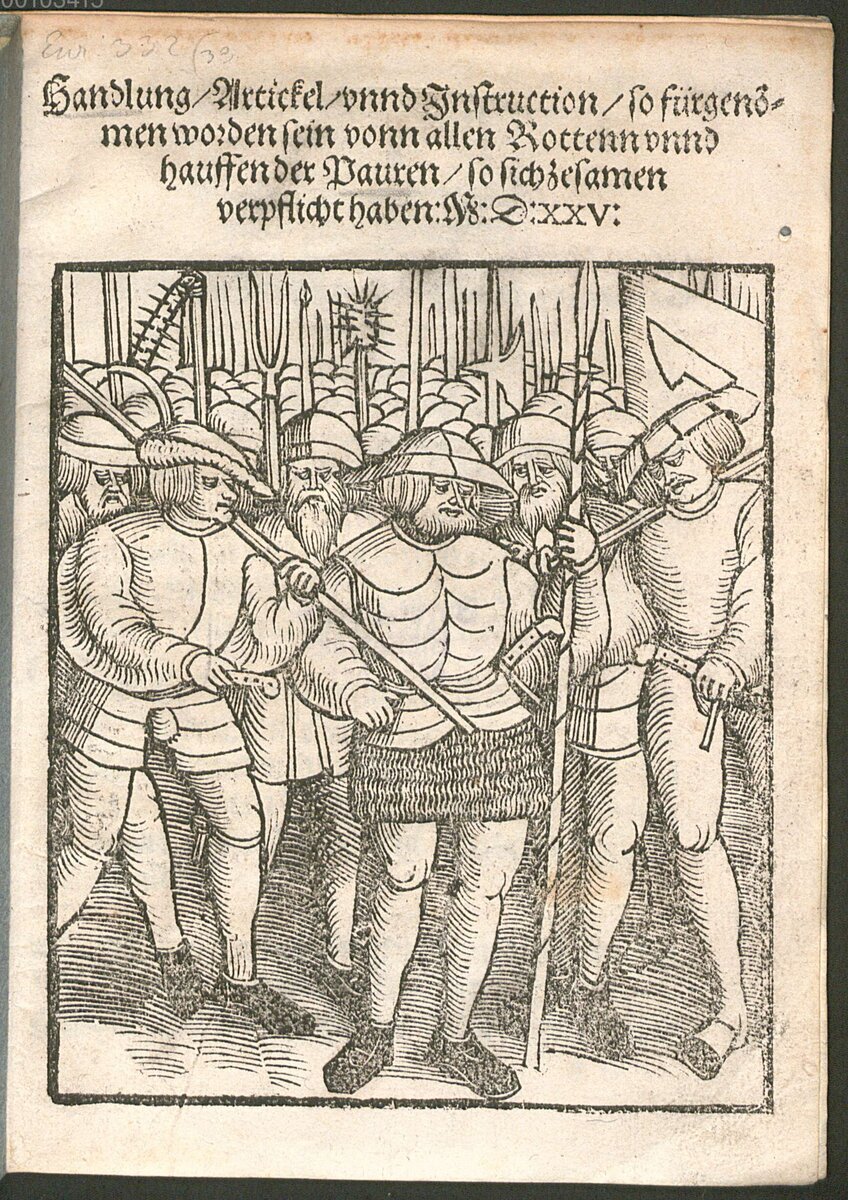Abstract
In 1525, a series of peasant rebellions incited by demands for
greater local self-government and religious freedom swept through many
of the southern German lands. The rebellions came to be known
collectively as the Revolution of 1525, or the German Peasants’ War.
This image decorated the title page of the so-called Memmingen
Bundesordnung, one of only two
surviving political programs of the peasant rebels. It was drawn up at
the same assembly in Upper Swabia as the other document, the
Twelve Articles. The image depicts a
band of peasants armed with pitchforks and other primitive weapons.
Inexperienced, insufficiently organized, and ill-equipped, thousands of
peasants died in the uprising.
